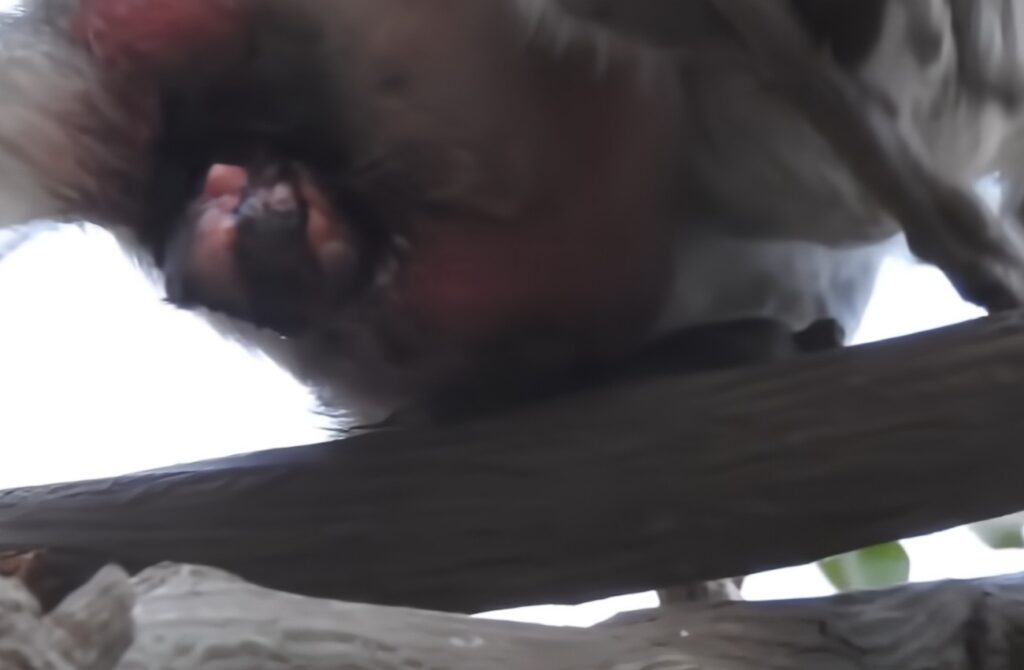High in the emerald embrace of the rainforest canopy, life thrives in a delicate balance of beauty and brutality. Amidst the chorus of chirping birds and rustling leaves, a mother monkey sits cradling the tiny, lifeless body of her newborn. Her eyes, usually alert and filled with playful mischief, are now dark pools of sorrow. In a world where survival often eclipses sentiment, this moment reveals the raw, aching truth that grief is not a uniquely human experience.
Primates, like this mother, form deep emotional bonds—especially between mother and infant. From the moment her baby was born, she was its protector, nurturer, and constant companion. For days, she cleaned its tiny face, held it close to her chest, and sheltered it from the world’s dangers. The bond was unspoken but powerful, forged in instinct and reinforced through tender care. And then, just as suddenly, it was severed. The infant’s body stopped responding—too fragile for the harshness of the world around it.
Still, she holds on.

Observers have documented this behavior across various species of primates—chimpanzees, baboons, macaques. When a baby dies, mothers often continue to carry the body for days, even weeks, grooming it and refusing to let go. It’s a heartbreaking ritual, one that forces us to question the boundary we often draw between human and animal emotion. Her actions are not of confusion but of mourning—a desperate refusal to accept a devastating reality.
Around her, the troop continues with daily life. The sun filters through the branches as young monkeys leap and play, while elders forage with seasoned precision. But the grieving mother is set apart, enveloped in a quiet cocoon of loss. Occasionally, she casts furtive glances at others, as if searching for understanding that may never come. Her movements are slower, more tentative, as though her very spirit has been dimmed.
What makes this moment especially poignant is its silence. There are no cries, no keening sounds—just the stillness of the forest and the weight of her sorrow. It’s easy to romanticize or anthropomorphize animal behavior, but science increasingly supports what we intuitively feel: that animals experience complex emotions, including grief. Brain scans and behavioral studies suggest that primates process loss in ways startlingly similar to us. And when you witness a scene like this, the emotional resonance is undeniable.
Nature is filled with survival stories, but it’s also filled with stories of loss. This mother’s quiet vigil in the treetops reminds us that love and grief are not confined to our species. The canopy, often portrayed as a realm of carefree chatter and vibrant life, also bears witness to heartbreak.
Eventually, she will let go. Time will compel her to rejoin the troop fully, to forage, to climb, to care again. But for now, in this still, sacred space among the leaves, a mother mourns. And the forest holds its breath with her.
